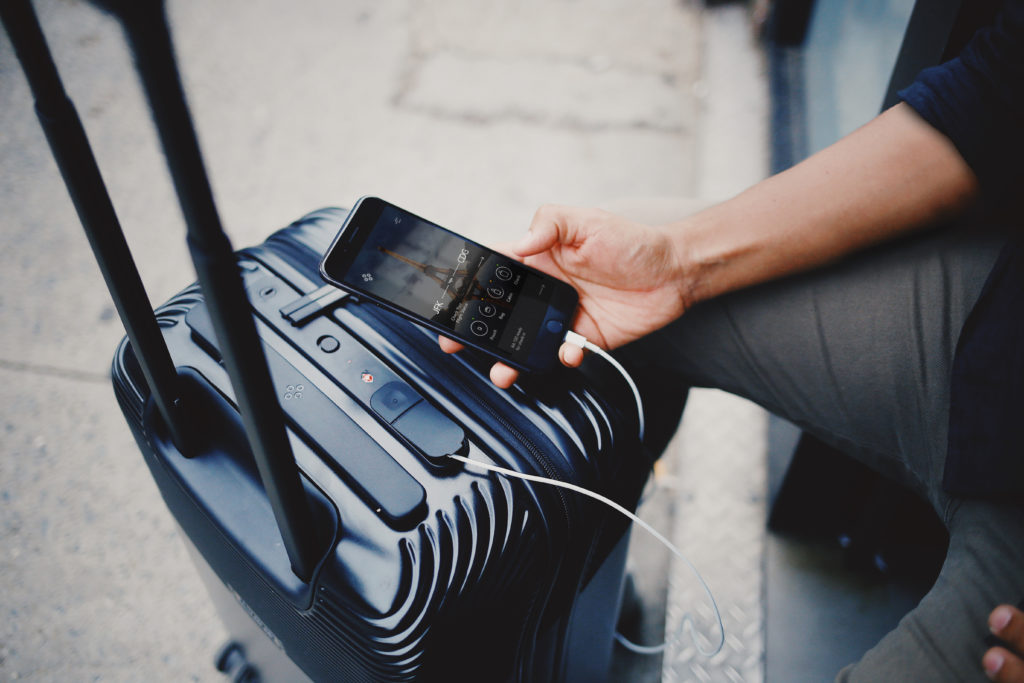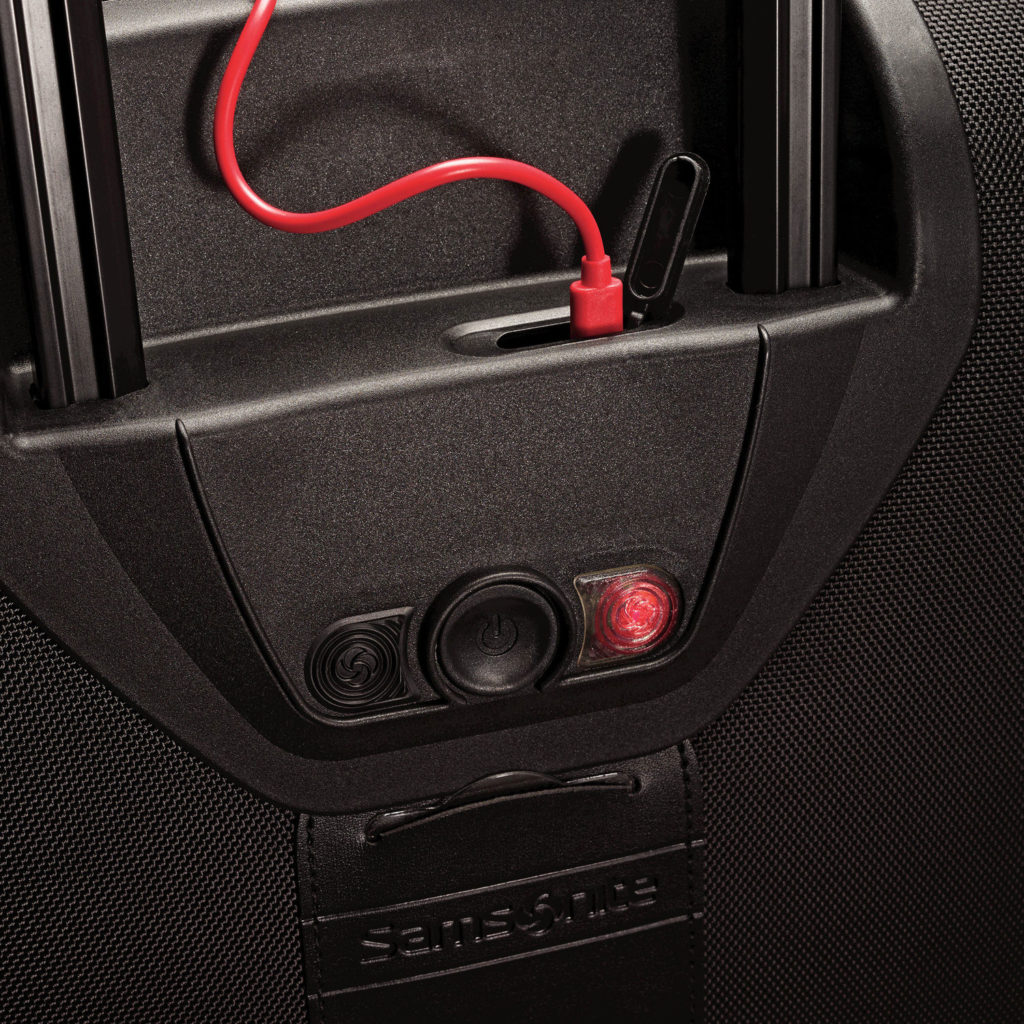Smart luggage have been around for a few years now, and they have been highly popular on crowdfunding sites like Indiegogo. These bags and suitcases typically include bluetooth functionality that enables features such as tracking the bag, locking the bag automatically with a proximity sensor, etc. Since these features require a power source, many of these bags also have a built-in battery pack that allows users to charge their mobile devices on the go.
Bluesmart is one of the first companies to manufacture and sell these smart luggage, having been founded since 2013. But many old names in luggage manufacturing have also began making smart luggage. Samsonite, for example, have their Geotrakr series of bags that include built-in batteries to power its tracking features.
 Many US airlines are now banning smart bags or suitcases that include a non-removable battery. Source: Bluesmart
Many US airlines are now banning smart bags or suitcases that include a non-removable battery. Source: Bluesmart
Early this afternoon, American Airlines announced that beginning January 15, 2018, smart luggage with non-removable batteries will not be allowed for travel. If the battery pack is removable, the customer can detach it and travel with the bag (and the battery separately). Otherwise, the bag will not be allowed at all (i.e. not as a carry-on, and not as a checked bag). This is most likely in place in case any carry-ons have to be gate checked.
Delta and Alaska Airlines have since announced similar bans, with an identical start date of January 15, 2018. Neither airline will allow the bag on the plane at all if the battery is non-removable. According to the LA Times, United is expected to make a similar announcement soon.
Of note, the IATA already has guidelines set out for smart baggage with integrated batteries. However, they do not include language prohibiting bags with non-removable batteries outright. Rather, they state that “operator approval [is] not required” for installed or spare battery meeting the following criteria:
- Lithium metal or alloy batteries: less than 2 g in weight
- Lithium ion batteries: less than 100 Wh
The FAA has similar restrictions already in place as well, with identical criteria. Interestingly, these airlines’ restrictions seem to be more stringent than FAA regulations. For example, the Bluesmart carry-on bag has a 10,000 mAh battery pack, which, at 5 V, translates to 50 Wh. This number meets IATA or FAA requirements, but the fact that it is non-removable does not meet airlines’ requirements.

Samsonite Geotrakr line of luggage incorporates a non-removable rechargeable battery. Source: Samsonite
Bluesmart, a company that manufactures and sells smart luggages, posted a statement on the company’s blog following American Airlines’ announcement. Excerpt below:
We want to clarify that all our products are compliant with FAA, DOT, FCC and UN38.3 regulations…With over 65,000 Bluesmart suitcases safely traveling around the world, the smart luggage industry continues to grow.
We understand that there are some airport security concerns about travel technology and companies adhering to the various regulations and quality standards….while most airlines understand and approve of smart luggage, others might still be getting up to speed.
We are saddened by these latest changes to some airline regulations and feel it is a step back not only for travel technology but it also presents an obstacle to streamlining and improving the way we all travel.
The luggage maker states that they are organizing meetings with airlines to attempt to exempt Bluesmart luggages from such regulations.
I’d be interested to see if this becomes a more global trend. Alaska Airlines’ statement seems to suggest that their new restriction came following a new ruling from ICAO earlier this week—perhaps foreign airlines will follow suit in similar bans.
I think the likelihood of certain luggages being “exempted” is frankly unlikely, especially considering the difficulty in enforcing them. More likely, I think suitcase makers in the “smart luggage” market might just start making all battery packs removable.
The responses below are not provided or commissioned by the bank advertiser. Responses have not been reviewed, approved or otherwise endorsed by the bank advertiser. It is not the bank advertiser's responsibility to ensure all posts and/or questions are answered.
3 comments
The document you linked to seems to address this specifically:
“Any spare lithium battery, including power banks that are designed
to charge other electronic devices, installed in a baggage item must
be able to be removed from the bag so that the passenger can carry
the spare lithium battery / power bank into the cabin. No lithium
battery contained in a bag may be considered as “installed in
equipment””
Yeah, it turns out putting a cheap, unstable battery inside a suitcase with highly flammable clothing and then locking it underneath a plane traveling 30K feet in the air was a bad idea. Who would have thought that?
[…] Many US Airlines Now Banning Smart Luggage. – Yeah, it turns out putting a cheap, unstable battery inside a suitcase with highly flammable clothing and then locking it underneath a plane traveling 30K feet in the air was a bad idea. Who would have thought that? Charlie returned his “smart” luggage over a year ago. […]